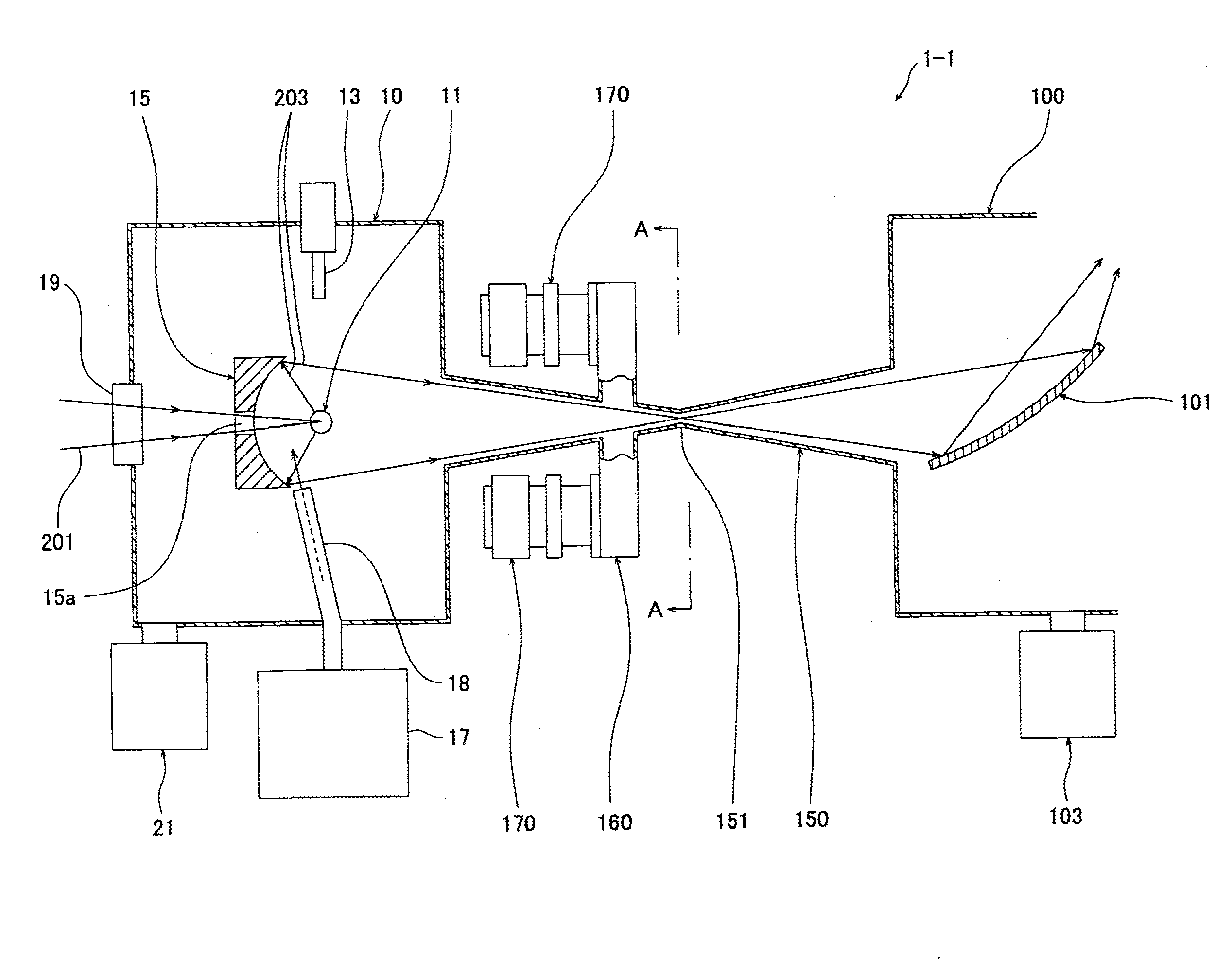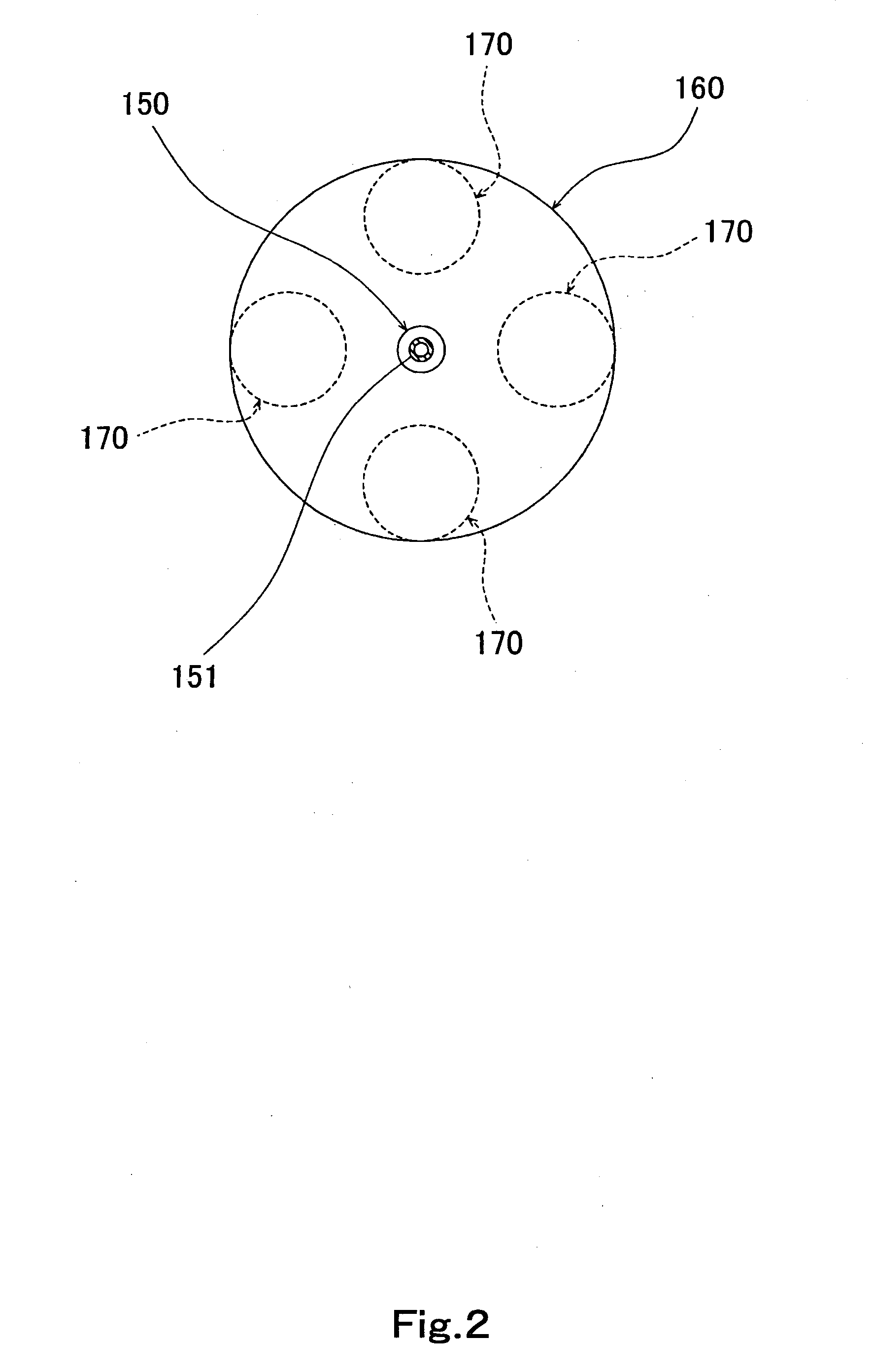Differential evacuation system
- Summary
- Abstract
- Description
- Claims
- Application Information
AI Technical Summary
Benefits of technology
Problems solved by technology
Method used
Image
Examples
first embodiment
[0034]FIG. 1 is a schematic view showing the arrangement of a main part of a differential evacuation system 1-1 according to the present invention. As shown in the figure, the differential evacuation system 1-1 has a light generation chamber 10 accommodating a plasma 11 serving as a light source that generates (emits) EUV light, an illumination optical chamber 100 in which optical processing (e.g. exposure processing for semiconductor manufacture) is performed by using EUV light generated in the light generation chamber 10, and a chamber connecting passage 150 serving as a light passage that connects together the light generation chamber 10 and the illumination optical chamber 100 to guide light generated in the light generation chamber 10 into the illumination optical chamber 100.
[0035]The light generation chamber 10 has a nozzle (target material supply means) 13 that supplies a target material (e.g. xenon (Xe) gas, droplet, cluster, etc., tin (Sn) droplet, or lithium (Li) droplet)...
third embodiment
[0047]FIG. 4 is a schematic view showing the arrangement of a main part of a differential evacuation system 1-3 according to the present invention. The differential evacuation system 1-3 shown in FIG. 4 differs from the foregoing differential evacuation system 1-1 in that the position of the enlarged-diameter part 160 installed in the chamber connecting passage 150 is near the flow path constricting portion 151 of the chamber connecting passage 150 and closer to the illumination optical chamber 100 than the flow path constricting portion 151, and in that two superconducting magnets 23 are used to prevent ions and other debris from reaching the converging mirror 15 instead of blowing a buffer gas onto the surface of the converging mirror 15, thereby reducing the degradation of the reflectance of the converging mirror 15. In this embodiment, a magnetic field is generated in a direction perpendicular to the optical axis of the converging mirror 15. Ion debris is moved in the magnetic f...
PUM
 Login to View More
Login to View More Abstract
Description
Claims
Application Information
 Login to View More
Login to View More - R&D
- Intellectual Property
- Life Sciences
- Materials
- Tech Scout
- Unparalleled Data Quality
- Higher Quality Content
- 60% Fewer Hallucinations
Browse by: Latest US Patents, China's latest patents, Technical Efficacy Thesaurus, Application Domain, Technology Topic, Popular Technical Reports.
© 2025 PatSnap. All rights reserved.Legal|Privacy policy|Modern Slavery Act Transparency Statement|Sitemap|About US| Contact US: help@patsnap.com



